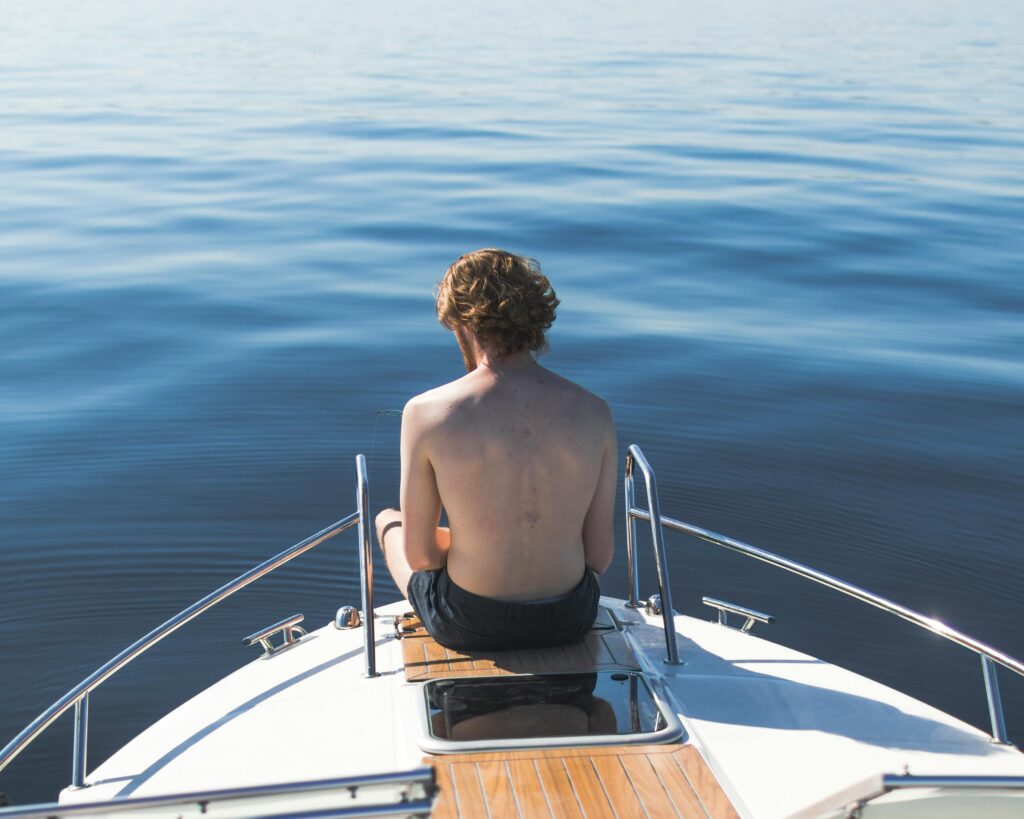Will I get seasick?

Before starting a sailing adventure, some new sailors want to know whether they will get seasick and how to prevent it. We know that nothing kills the vibe of a gorgeous day at sea faster than feeling like your stomach has joined a competitive gymnastics team. Fear not, my nautical novices and seafaring sweethearts – we’ve compiled the ultimate guide to keeping seasickness at bay so you can focus on more important things (like who’s applying sunscreen to whom).
While we aren’t qualified to give medical advice (please see a medical professional for that), we can tell you about our experience over the years to make a trip as fun as possible. Here’s how we approach seasickness:
What causes that queasy feeling anyway?
Before we dive into solutions, let’s understand the enemy. Seasickness happens when your inner ear (which controls balance) reports motion, but your eyes don’t see it – or vice versa. Your brain essentially throws a dramatic tantrum over this conflicting information, and your stomach gets caught in the crossfire. It’s like that toxic ex who can’t keep their story straight – nobody needs that drama!
Prevention: The Best Medicine (Besides Champagne)
Choose Your Position Wisely
And no, we’re not talking about that kind of position (though we could write a whole different article on that topic). On a boat, midship is where it’s at – the center of the vessel experiences the least motion. Think of it like avoiding the edge of the dance floor where all the wild moves happen. Stay center stage, stay fabulous, stay balanced.
Also, if tablets or other remedies are your thing, start them before we start the boat. It can take a few hours for seasickness pills to work their charm (just remember to follow the dosage or other instructions from your medical care professional).
Keep Your Eyes on the Horizon, Honey
Just like keeping your eye on that stunning coastline along the horizon helps your brain process the motion correctly. This gives your inner ear and your eyes the same story, preventing that internal argument that ends with you hugging the loo. When below deck, this gets trickier – if you must go down, try to maintain a visual reference to the outside world if possible.
Sip, Don’t Gulp
Stay hydrated but avoid chugging anything. Small, frequent sips of water are your friend. Ginger ale or tea isn’t just for your grandma’s digestive issues – it works wonders on rocky seas. And as much as we hate to be the bearers of bad news, maybe save that fourth mimosa for when you’re safely anchored in a calm bay. Alcohol can make seasickness significantly worse – and honey, green is not your color in this scenario.
Snack Strategically
Sailing on an empty stomach is like going to a sample sale unprepared – a recipe for disaster. But that doesn’t mean gorge yourself at the breakfast table. Stick to bland, carb-heavy snacks like crackers or bread. Save the exotic cuisine for terra firma. Despite what you may think, those greasy breakfast sandwiches are not your allies here.
Other Strategies to Prevent Getting Seasick
There are many other products on the market that purport wonderful results. You’re welcome to try them to find out which one works best for you. These include acupressure wristbands, patches behind the ear, and seasickness tablets.
When All Else Fails…
Remember that seasickness usually passes as your body adapts to the motion – typically within a day or two. If you do find yourself worshipping at the porcelain altar, don’t fight it. Sometimes you just need to get it out (of your system, that is). Afterward, you’ll often feel much better.
And remember, even the most seasoned sailor has had a queasy moment or two. There’s no shame in it – though if possible, try to make it to the leeward (aka: downwind) side of the boat.
With these tips in your designer duffle bag, you’re ready to conquer the seas with all the grace and poise of a runway model – minus the dramatic stumbles. Now go forth, be fierce, and leave the green complexion to envious landlubbers watching you sail off into the sunset!





